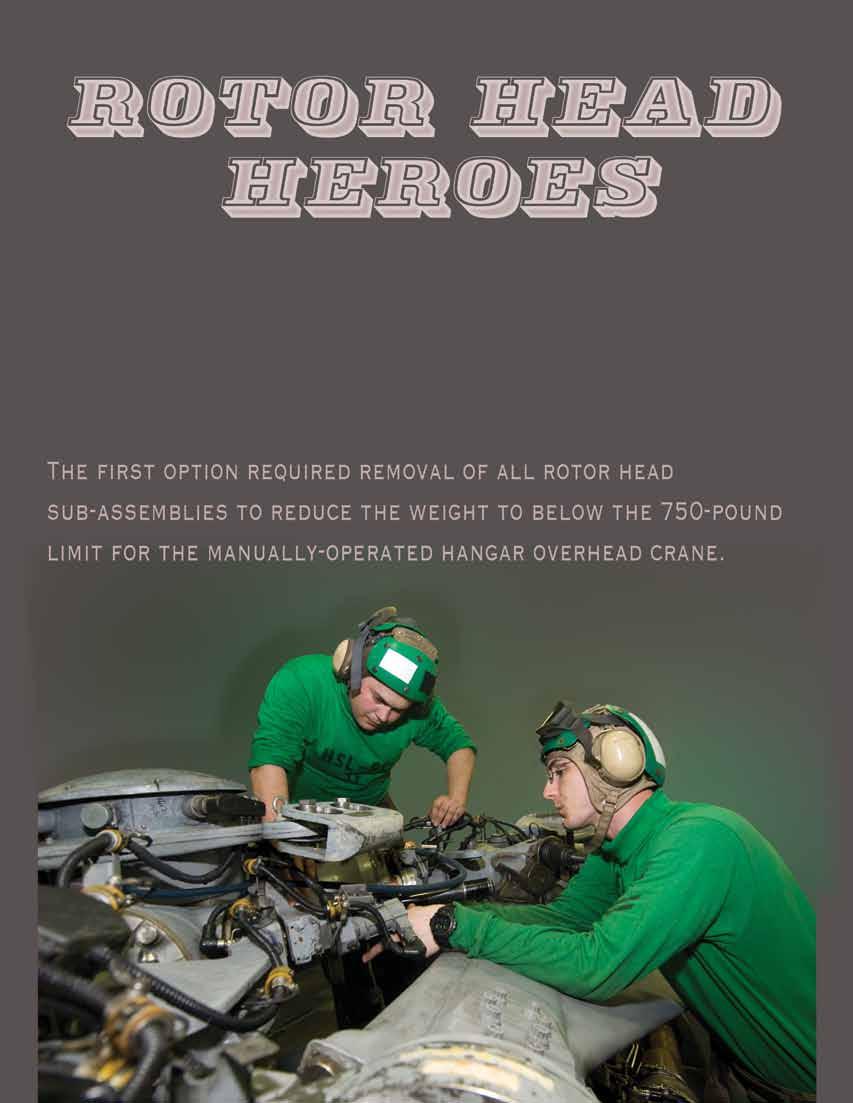
2 minute read
Rotor Head Heroes
By Lt. Brian Cush
HSL-49, Det. 3 faced its share of maintenance challenges during deployed counter-illicit-trafficking operations aboard USS Jarrett (FFG-33). One such challenge turned out to be a great example of how effective risk management can solve complex problems.
Advertisement
During a phase maintenance inspection, maintainers discovered corrosion lining the swashplate guide-assembly below the uniball.
Navy photo by MC3 Jared Hill.
The corrosion was so bad that they had to remove the assembly, which fits over the main rotor shaft and rests on the top of the main gear box. Removing this component also requires the removal of the rotorhead hub.
How do you safely remove a 1,500-pound rotor head with the limited crane facilities available while underway on a frigate? During shore-based operations, this rarely poses a problem. Overhead cranes in the squadron hangar are more than capable of lifting the rotor head and are maneuverable enough to swing the load away from the aircraft. This wasn’t the case aboard Jarrett.
In an effort to get out in front of the risks we faced, we consulted maintenance support facilities in San Diego. Our squadron QA shop came up with two courses of action.
The first option required removal of all rotor head sub-assemblies to reduce the weight to below the 750- pound limit for the manually-operated hangar overhead crane. The second option: Use the overhead-mounted J-bar davit to lift the fully assembled rotor head from its station. However, the J-bar davit was unavailable, so option No. 2 was scrapped.
Our ADs removed the various sub-assemblies (four spindle assemblies, the bifilar weight assembly, dampers, and the main rotor head accumulator). We assessed the increased risk of removing a rotor head in the confined space of the hangar. If the heavy load began to swing while suspended from the crane, it could injure somebody if it hit them.
Our plan was to lift the rotor hub, traverse the helicopter aft, position the rotor stand beneath the suspended rotor head, and lower the rotor head onto the stand. After analyzing the risks of this evolution, we put several controls in place.
To mitigate the hazard of a swinging load, the ship remained at “amber” deck for the entire evolution. A steady course and no speed changes helped to minimize rocking of the ship and oscillation of the suspended rotor hub. We also had two line tenders stabilizing the rotor head. Safety observers did not allow personnel within ten feet of the suspended load.
We were smart about how we supervised personnel. Our maintenance leadership assigned specific personnel to each activity (one team for the aircraft move and another for the crane operation). As an extra precaution, each evolution had its own designated safety observer. As always, we briefed the sequence of events for each evolution so everyone knew exactly what to expect. The result: The evolution went smoothly.
Lt. Cush flies with HSL-49.
- Need a video for a presentation or safety stand-down?











